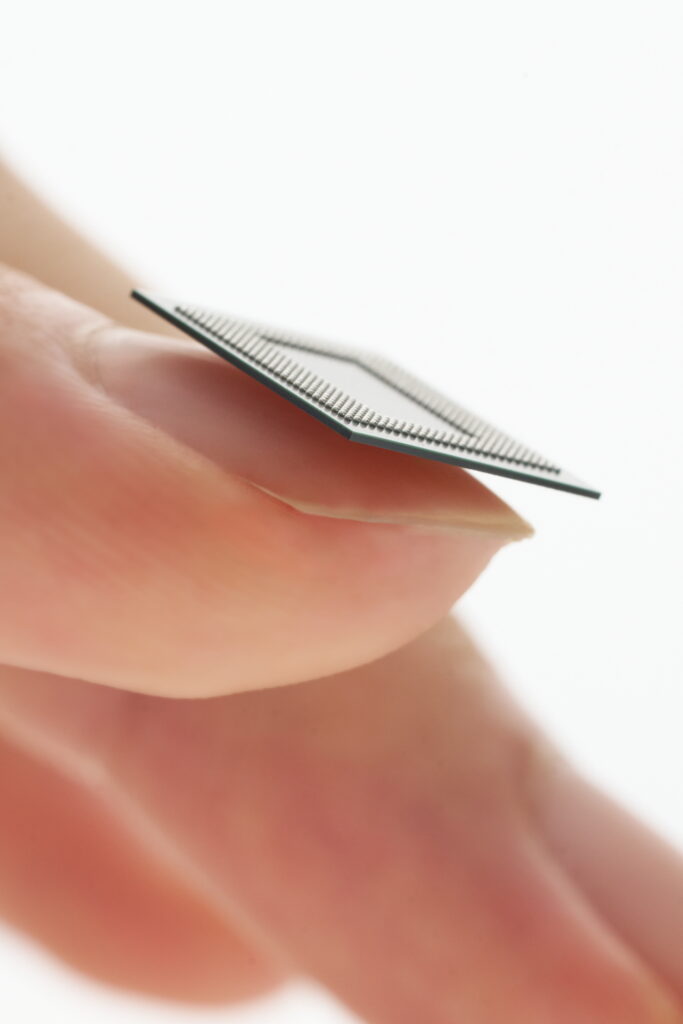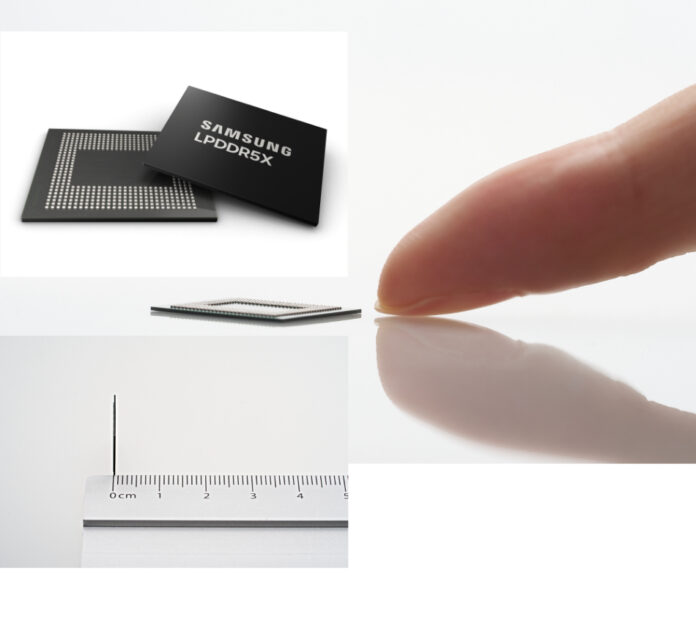Samsung has crafted ultra-thin LPDDR5X memory chips built to support mobile devices with AI workloads.

LPDDR5X is low power double data rate DRAM, and Samsung has made it using 12nm-class process technology with a 0.65mm package height, likened to fingernail thickness. It is producing 12GB and 16GB capacity versions of the chip, with 4 DRAM die layers, each layer having two LPDDR DRAMs. It is nine percent (0.06mm) thinner than previous generation product, and also has 21.2 percent more heat resistance, says Samsung.
It says it has optimized printed circuit board (PCB) and epoxy molding compound (EMC) techniques and back-lapping to make the chip package thinner. The EMC material protects semiconductor circuits from various external risk, such as heat, impacts, and moisture.
Samsung reckons its memory chip will be good for AI-enhanced mobile devices. YongCheol Bae, EVP for Memory Planning, claimed: “Samsung’s LPDDR5X DRAM sets a new standard for high-performance on-device AI solutions, offering not only superior LPDDR performance but also advanced thermal management in an ultra-compact package.”

High capacity memory chips contribute to the heat load inside a mobile device and enabling better airflow may in some ways enable better thermal management. That said, there are no fans inside mobile devices and so the airflow is passive, convective, and not that effective as a cooling agent. Generally mobile devices use heat spreading from the warmest components, like the processor and wireless chips, within the device, transferring heat via conduction to the sealed case. This functions as a heat sink and natural convection from the case expunges unwanted heat.
Samsung’s thinner LPDDR5X package could help enable thinner mobile devices and that, in some users’ minds, could trump the thermal management capability.
The company aims to supply its new chip to both mobile processor makers as well as mobile device manufacturers. Samsung does, of course, make its own Exynos mobile processor and Galaxy smartphones, so will also be using the new chip.
The roadmap for the device has planned 6-layer 24GB and 8-layer 32GB chips. They will probably be thicker.
Bootnote
Back-lapping involves grinding a chip’s surface using abrasive slurry, a mixture of abrasive material (e.g. silicon carbide and boron carbide) suspended in water or oil, instead of fixed-abrasive wheels for a less stressful thinning process.








